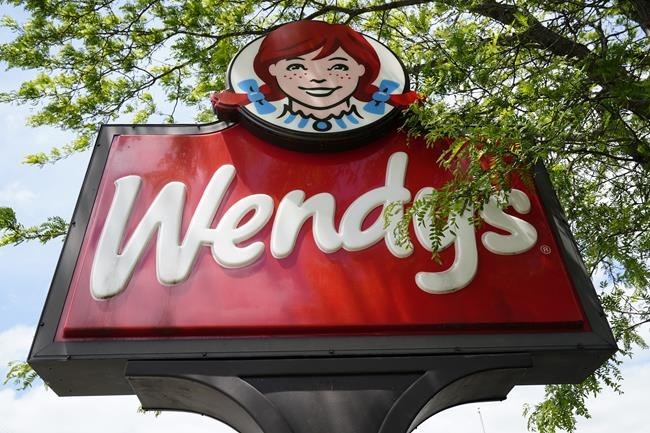Fast food restaurants are diving deeper into the digital realm, adopting strategies that range from dynamic pricing to drive-thru voice bots and weather-based menu boards.
Experts say the cutting-edge sales tactics have the potential to streamline service, lure new customers and fill in labour gaps amid high staff turnover, but they also warn the public may be put off by poor communication and privacy concerns.
News of a plan at Wendy's to implement "dynamic pricing" drew backlash after CEO Kirk Tanner told financial analysts on a Feb. 15 conference call that the 7,000-outlet burger chain would introduce it as early as next year.
Wendy's clarified in an email Wednesday that the fluctuating price tags will mean lower prices during slower times of day, rather than surge pricing during peaks.
The initial confusion over whether the 55-year-old establishment would embrace up-and-down pricing tactics similar to tech-savvy ticket sellers and ride-hailing companies marked the latest shift for a quick-service sector that's increasingly shaped by digital technology and artificial intelligence.
Chains including Canadian-owned Popeyes, as well as Taco Bell, Panera Bread and Chipotle, have tested AI-driven virtual assistants at drive-thrus.
Next year, Wendy's plans to try out menu boards at all U.S. locations that can offer AI-prompted changes and "suggestive selling" based on the weather — “a cool Frosty on a warm summer day,” said spokeswoman Marcy McMillan. McDonald’s has done likewise for about eight years, and in 2019 acquired Israeli AI firm Dynamic Yield in a reported US$300-million deal before selling it two years later.
As far back as 2017, KFC offered customers in Beijing recommendations based on their apparent gender, age and mood via facial recognition technology embedded in a menu screen.
“In the last five, seven years in the restaurant segment, there's been so much adoption of technology through your third-party aggregators, your loyalty apps, your people ordering online through your website — you can collect all that data, you can collect your competitors’ pricing strategies. And all of that comes together and starts to be analyzed in real time,” said Robert Carter, managing partner at the StratonHunter Group.
“The output is a much more competitive pricing strategy.”
However, food costs are a sensitive topic after nearly two years of high inflation, and companies need to be cautious in how they roll out and promote dynamic pricing and other tech, said retail analyst Bruce Winder.
“What Wendy's is trying to do is smooth out demand so that their patrons don't come exclusively at noon and exclusively at five or six,” he said. Lower prices at off-peak times could also attract more guests overall.
“But you’re kind of asking the customer to break a tradition that’s been around for a couple of hundred, if not thousands, of years."
Maintaining consumers' sense of privacy is also key — at least for now.
"If I pull up to a drive-thru and they say, 'Hey, Bruce, how you doing?' I might feel a little taken aback by that," Winder said. But experts also say younger buyers tend to be more blasé about personalized data collection.
Dynamic pricing already plays a role in a range of industries, and not just those led by digital disrupters. Airlines, hotels, big-box stores and sports venues all rely on sophisticated algorithms for continual price fluctuation based on demand, supply and consumer behaviour, as do companies such as Uber and Amazon.
The changes can be attention-grabbing — "send out a social media blast and you have a flash sale to drive traffic at those slower periods," said Carter.
They can also be subtle, involving multiple price tweaks per day to hundreds of flights or millions of products — or dozens of fast-food items across thousands of locations. "That's going to translate into millions of dollars in increased revenue from just very slight changes," he said.
Speedy drive-thrus and a smooth digital experience are more essential than ever to fast-food chains, where dine-in customers make up a shrinking share of revenue compared to pre-pandemic levels.
Delivery apps, pickups and drive-thrus accounted for 70 per cent of fast-food orders in Canada last year, with the remaining 30 per cent consumed on site, according to market research firm Circana.
The transition hasn't been flawless. In the U.S., some customers have taken to social media to complain about their experience with drive-thru voice bots, which critics said pushed hard upsells and mistook orders from patrons in the next lane for their own. Drive-thrus can be noisy environments, while virtual assistants may struggle with accents, experts note.
None of that is stopping Wendy's.
"We are making a significant investment in technology to accelerate our digital business" — US$30 million on digital menu boards over the next two years alone — said McMillan.
There is no timeline for a rollout of the AI-enriched menus or dynamic pricing in Canada, she said.
This report by The Canadian Press was first published Feb. 28, 2024.
Christopher Reynolds, The Canadian Press

